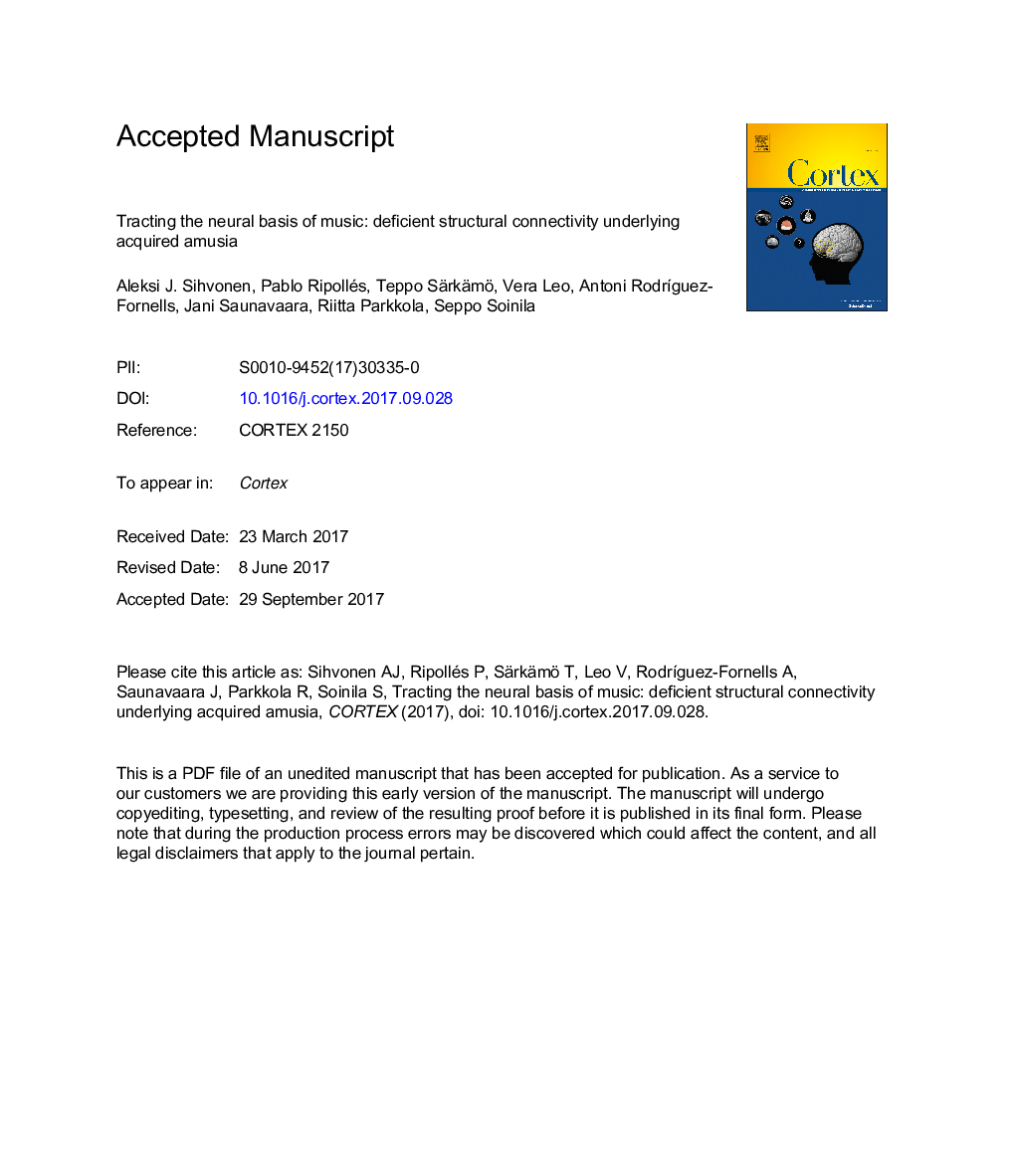| Article ID | Journal | Published Year | Pages | File Type |
|---|---|---|---|---|
| 7312344 | Cortex | 2017 | 51 Pages |
Abstract
Acquired amusia provides a unique opportunity to investigate the fundamental neural architectures of musical processing due to the transition from a functioning to defective music processing system. Yet, the white matter (WM) deficits in amusia remain systematically unexplored. To evaluate which WM structures form the neural basis for acquired amusia and its recovery, we studied 42 stroke patients longitudinally at acute, 3-month, and 6-month post-stroke stages using DTI [tract-based spatial statistics (TBSS) and deterministic tractography (DT)] and the Scale and Rhythm subtests of the Montreal Battery of Evaluation of Amusia (MBEA). Non-recovered amusia was associated with structural damage and subsequent degeneration in multiple WM tracts including the right inferior fronto-occipital fasciculus (IFOF), arcuate fasciculus (AF), inferior longitudinal fasciculus (ILF), uncinate fasciculus (UF), and frontal aslant tract (FAT), as well as in the corpus callosum (CC) and its posterior part (tapetum). In a linear regression analysis, the volume of the right IFOF was the main predictor of MBEA performance across time. Overall, our results provide a comprehensive picture of the large-scale deficits in intra- and interhemispheric structural connectivity underlying amusia, and conversely highlight which pathways are crucial for normal music perception.
Keywords
Corpus callosumRNRADeterministic tractographyMontreal Battery of Evaluation of AmusiaRRAIFOFILFNRAPRARHDGMVIPLFWEIFGSLFDTITBSSMCAROIMTGStgPNARight hemisphere damagetract-based spatial statisticsRNAradial diffusivityinferior fronto-occipital fasciculusanalysis of varianceANOVATractographydiffusion tensor imagingsuperior temporal gyrusGrey matter volumeSMAAmusiaStrokemiddle cerebral arteryarcuate fasciculussuperior longitudinal fasciculusinferior longitudinal fasciculusUncinate fasciculusinferior frontal gyrusinferior parietal lobulewhite mattermean diffusivitysupplementary motor areaPresupplementary motor arearegion of interestMUSICFrontal aslant tractfractional anisotropyFamilywise error ratePre-SMAFatinternal capsulemiddle temporal gyrus
Related Topics
Life Sciences
Neuroscience
Behavioral Neuroscience
Authors
Aleksi J. Sihvonen, Pablo Ripollés, Teppo Särkämö, Vera Leo, Antoni RodrÃguez-Fornells, Jani Saunavaara, Riitta Parkkola, Seppo Soinila,
